|
Pork Sausage
There are many different types sausage available. They are made from fresh ground pork, seasonings, fat, preservatives, and fillers, such as breadcrumbs, rice, cereal, soybean flour, and dried milk solids. Some varieties are a mixture of pork and other meats, such as beef, veal and poultry. Sausage can be found in the form of ground meat, patties, stuffed into casings and slices. The casings can be a natural casing made of animal intestines or an artificial casing. They are cured and/or smoked and may also be cooked or dried. Different varieties of sausage are served for various purposes, such as entrées, breakfast meats, luncheon meats, and appetizers. The basic types produced are shown below. |
|
Fresh (uncooked)
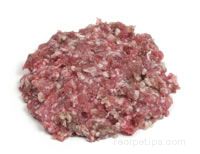 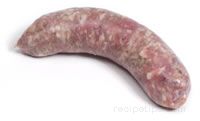
 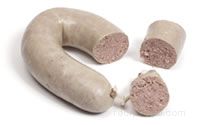
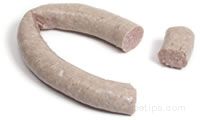
Sausage made from uncooked pork, which is chopped or ground, seasoned and then sold in bulk, formed into patties or stuffed into a casing. It may also have other meats, such as beef or poultry, added to it. Fresh sausages have not been cooked or cured, but may be smoked and must be cooked before eating. Includes products such as ground sausage, bratwurst, weisswurst, bockwurst (also available cooked), and linguica. |
|
Smoked and Cooked
 
  
Made from fresh chopped or ground pork that is cured, smoked and cooked fully. These sausages are ready to eat and include products such as kielbasa (cooked polish sausage), franks, bologna (sold in rings and slices), and knackwurst (knockwurst). Some of the products, such as franks and bologna, are available as fine ground and coarse ground. |
|
Cooked
 
Pork sausage that has been fully cooked but not smoked or cured. It is generally in the form of skin-on or skinless links and patties that are ready to heat and serve but can also be found in a processed form, such as braunschweiger, which is used as a meat for sandwiches. |
|
Dried
 
 
Sausage that has been cured and dried under a controlled process using bacterial fermentation to create a distinctive flavor. They are wrapped in a casing and are generally hard and dry in texture and can be stored indefinitely without refrigeration as long as they are sealed in their original package. Once opened, they should be refrigerated. Pepperoni, Genoa salami, cotto salami, and chorizo are common dry sausages that are available. Dried sausages are ready to slice and serve. |
|
Semi-dry
 
Semi-dry sausage is dried in the same manner as dry sausage but does not have as much moisture removed. They sausages are softer than the dry sausages and should be refrigerated to maintain their quality. Summer sausage, Lebanon bologna, and mortadella are examples of semi-dry sausage. |
|
Sausage Specialties
 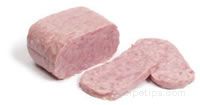
 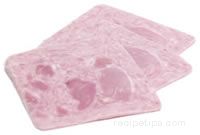
 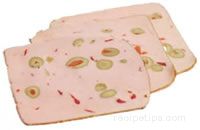
 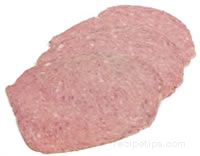
These are ready to slice and serve products that consist of ground meats, which are seasoned and cooked but generally are not smoked. The sausage specialty products are most often used for making sandwiches and hors d'oeuvres. They are often referred to as luncheon meats or cold cuts and are available in loaves, canned, sliced, and as prepackaged vacuum packed slices. They require refrigeration and for maximum freshness should be used within 3 to 5 days after opening . Canned meats, chopped ham loaf, peppered loaf, honey loaf, olive loaf, and scrapple are examples of sausage specialty products. Some of the specialty meats are available in reduced fat varieties also. |
|



